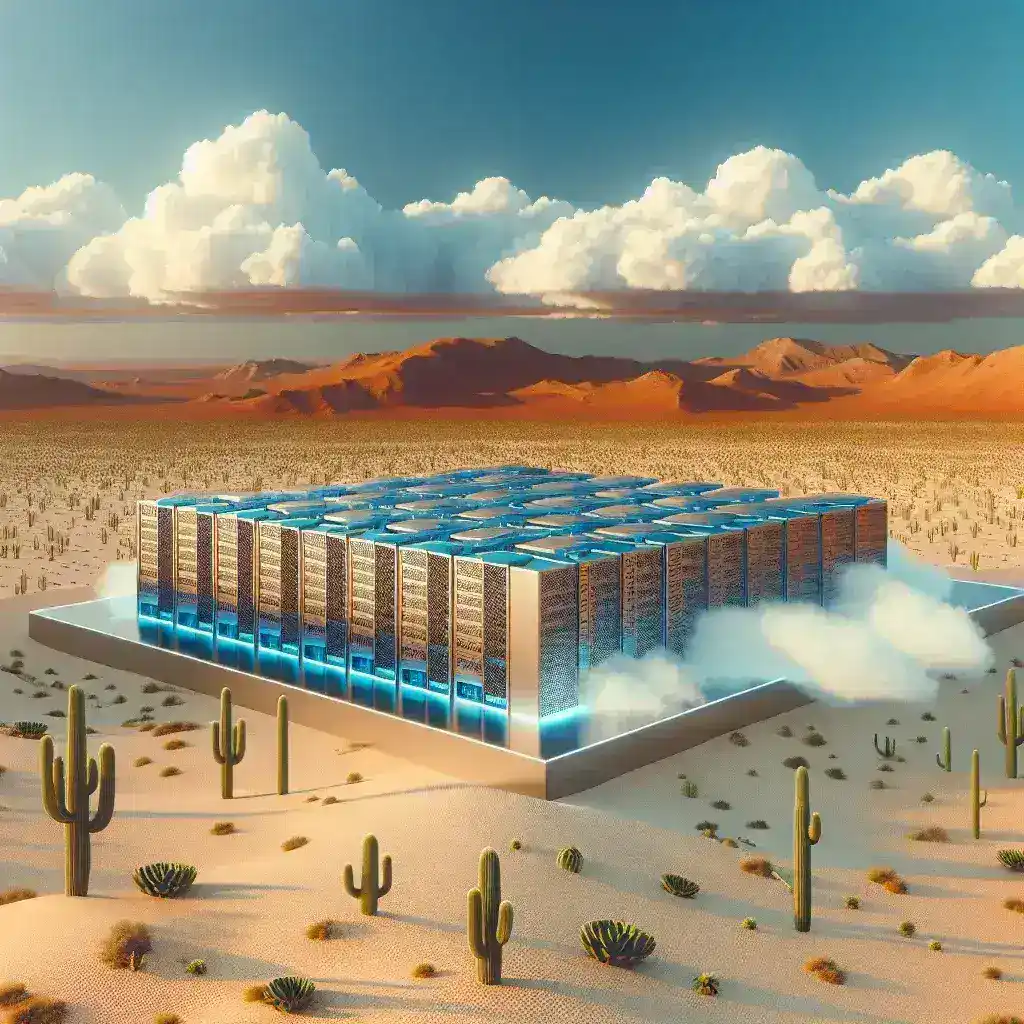Introduction
As the global demand for data processing and storage continues to surge, data centers are increasingly seeking efficient and sustainable solutions to manage their energy consumption and environmental impact. In particular, data centers located in arid regions face unique challenges due to limited water resources. To address this issue, many are turning to innovative waterless cooling technologies. This article explores the significance of these advancements and their implications for resource conservation.
The Challenges of Arid Regions
Arid regions, characterized by low rainfall and high temperatures, present specific challenges for data centers. Traditionally, data centers have relied on water cooling systems to maintain optimal operating temperatures. However, in areas where water is scarce, this practice can lead to significant resource depletion.
- Resource Scarcity: Excessive use of water for cooling can strain local water supplies, impacting agriculture and drinking water availability.
- Regulatory Pressures: Many governments are imposing stricter regulations regarding water usage in industrial applications, prompting data centers to seek alternatives.
- Cost Implications: As water becomes more expensive and scarce, the cost of operating water-cooled data centers can increase significantly.
Waterless Cooling Technologies
To mitigate these challenges, data centers in arid regions are exploring various waterless cooling technologies. These solutions not only conserve valuable water resources but also enhance energy efficiency. Here are some notable technologies:
1. Air Cooling
Air cooling systems utilize ambient air to dissipate heat generated by servers. This method is particularly effective in dry climates where the temperature differential can be capitalized upon. By employing advanced airflow management techniques, data centers can optimize cooling without relying on water.
2. Liquid Cooling
Innovations in liquid cooling technology have led to the development of systems that use non-water-based fluids, such as dielectric fluids, to transfer heat away from equipment. These systems can achieve higher cooling efficiencies and are less dependent on environmental conditions.
3. Phase Change Materials (PCMs)
Phase change materials absorb and release thermal energy during phase transitions (e.g., from solid to liquid). By integrating PCMs into data center cooling systems, operators can minimize temperature fluctuations and reduce reliance on traditional cooling methods.
4. Evaporative Cooling Alternatives
While traditional evaporative cooling methods depend on water, newer technologies are exploring alternatives that use materials that absorb moisture from the air to cool the environment. These systems aim to minimize water usage while maintaining effective cooling.
Benefits of Waterless Cooling Technologies
The adoption of waterless cooling systems presents numerous advantages for data centers, especially in arid regions:
- Sustainability: By minimizing water usage, data centers can contribute to the conservation of local water resources, aligning with sustainability initiatives.
- Cost-Effectiveness: Reduced water consumption translates to lower operational costs, particularly in areas where water is scarce and expensive.
- Enhanced Efficiency: Many waterless cooling technologies are designed to operate efficiently under extreme temperatures, improving overall energy performance.
- Future-Proofing: As climate change continues to impact water availability, adopting waterless cooling technologies positions data centers for long-term viability.
Case Studies
Several data centers around the world have successfully implemented waterless cooling technologies, showcasing their effectiveness and viability:
Example 1: Google’s Data Center in Hamina, Finland
Google’s data center in Hamina is an exemplary model of waterless cooling. It utilizes seawater for direct cooling, but it has also implemented air cooling technologies that significantly reduce the need for water. This innovative approach has allowed the center to operate efficiently while minimizing its environmental impact.
Example 2: Microsoft’s Project Natick
In an ambitious underwater data center project, Microsoft tested the viability of submerged servers cooled by natural ocean temperatures. This project not only demonstrates the potential of alternative cooling strategies but also underscores the shift towards waterless solutions.
Challenges and Considerations
While waterless cooling technologies offer numerous benefits, there are also challenges to consider:
- Initial Investment: The upfront costs of implementing advanced cooling systems can be substantial, which may deter some operators.
- Scalability: Not all waterless cooling solutions are easily scalable, which could limit their applicability in larger data centers.
- Operational Reliability: New technologies may require thorough testing to ensure they can handle peak loads effectively.
Future Predictions
As technology continues to evolve, the landscape of data center cooling is likely to change dramatically. With increasing pressure to conserve resources and reduce environmental footprints, innovations in waterless cooling will likely become more mainstream:
- Integration of AI: Artificial intelligence may play a pivotal role in optimizing cooling systems, allowing for real-time adjustments based on environmental conditions.
- Increased Collaboration: Industry players may collaborate to share best practices and develop standardized benchmarks for waterless cooling technologies.
- Regulatory Support: As water scarcity becomes a more pressing global issue, governments may offer incentives for data centers to adopt sustainable cooling practices.
Conclusion
The shift towards waterless cooling technologies in data centers located in arid regions represents a significant advancement in resource conservation and sustainability. By embracing innovative cooling methods, these facilities can reduce their environmental impact while meeting the growing demands of digital infrastructure. As the industry continues to evolve, the importance of sustainable practices will only increase, ensuring that data centers can thrive in an ever-changing climate.


Leave a Reply